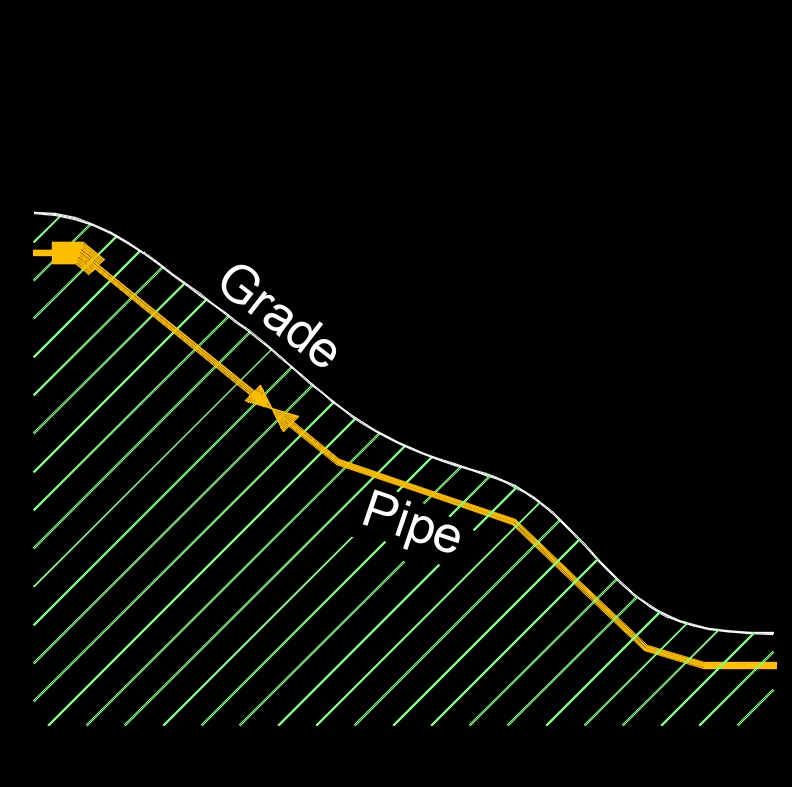Head Friction Loss in Fittings and Valves
Head Friction Loss in Fittings and Valves Formula |
||
|
\( h_f \;=\; K \cdot \dfrac{v^2 }{ 2 \cdot g } \) (Head Friction Loss in Fittings and Valves) \( K \;=\; \dfrac{ h_f }{ \dfrac{ v^2 }{ 2 \cdot g } }\) \( v \;=\; \sqrt{ \dfrac{ 2 \cdot g \cdot h_f }{ K } }\) \( g \;=\; \dfrac{ v^2 \cdot K }{ 4 \cdot h_f }\) |
||
| Symbol | English | Metric |
| \( h_f \) = Head Loss Frictional Resistance | \( dimensionless \) | \( dimensionless \) |
| \( g \) = Gravitational Constant | \(lbf-ft^2 \;/\; lbm^2\) | \(N - m^2 \;/\; kg^2\) |
| \( K \) = Loss Coefficient for Fittings and Valves | \( dimensionless \) | \( dimensionless \) |
| \( v \) = Flow Velocity | \(ft \;/\; sec\) | \(m \;/\; s\) |
 Head friction loss in fittings and valves, abbreviated as \(h_f\), should be consider when designing and analyzing fluid flow systems, such as those in pipelines, plumbing, or HVAC systems. It represents the energy loss or pressure drop that occurs as a fluid flows through various components like valves, and fittings in a piping system.
Head friction loss in fittings and valves, abbreviated as \(h_f\), should be consider when designing and analyzing fluid flow systems, such as those in pipelines, plumbing, or HVAC systems. It represents the energy loss or pressure drop that occurs as a fluid flows through various components like valves, and fittings in a piping system.
Head Friction Loss in Fittings and Valves are Primarily Caused by
Change in Flow Direction - When a fluid flows through a fitting like an elbow or a tee, it must change its direction of flow. This change in direction results in a loss of kinetic energy, which is converted into pressure drop. The sharper the change in direction, the greater the head loss.
Constriction and Expansion - Fittings and valves often have different geometries than the straight sections of pipe. Constrictions, such as reducing tees or valves in partially closed positions, can cause an increase in velocity and subsequently a pressure drop. Expansions, on the other hand, can slow down the flow and lead to a pressure increase.
In Head Friction Loss in Fittings and Valves, Engineers use Various Methods and Equations
K-Values - K-values (also called resistance coefficients or loss coefficients) are dimensionless values that represent the relative head loss associated with a specific fitting or valve. These values are typically determined experimentally and can vary depending on the design and size of the component.
Equivalent Length Method - This method treats fittings and valves as equivalent lengths of straight pipe that would cause the same head loss. The equivalent length is added to the actual length of pipe in the system, and standard pipe friction equations (Darcy-Weisbach equation or Hazen-Williams equation) are applied to calculate head loss.
Empirical Equations - Some fittings and valves have empirical equations that relate head loss to flow rate. These equations are often based on extensive testing and are specific to the type and size of the component.
It's important to note that the head friction loss in fittings and valves is typically expressed in terms of a pressure drop or head loss per unit length of pipe. Engineers use this information to design and size piping systems, select appropriate components, and ensure that the system operates efficiently without excessive energy losses or pressure drops. The specific values and equations for head friction loss in fittings and valves can vary depending on factors like the type of fluid, Reynolds number, and the geometry of the component. Therefore, it's essential to consult relevant engineering standards, manufacturer data, or fluid dynamics textbooks when analyzing or designing fluid flow systems.

